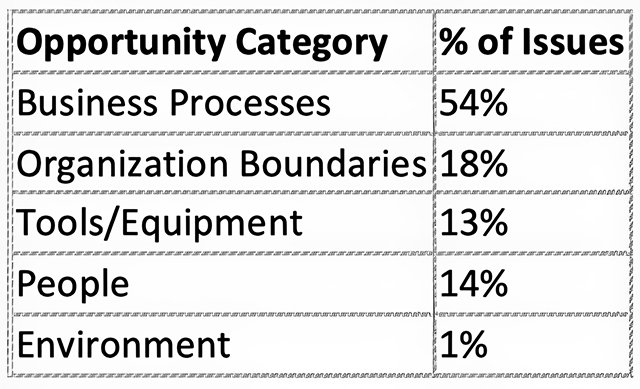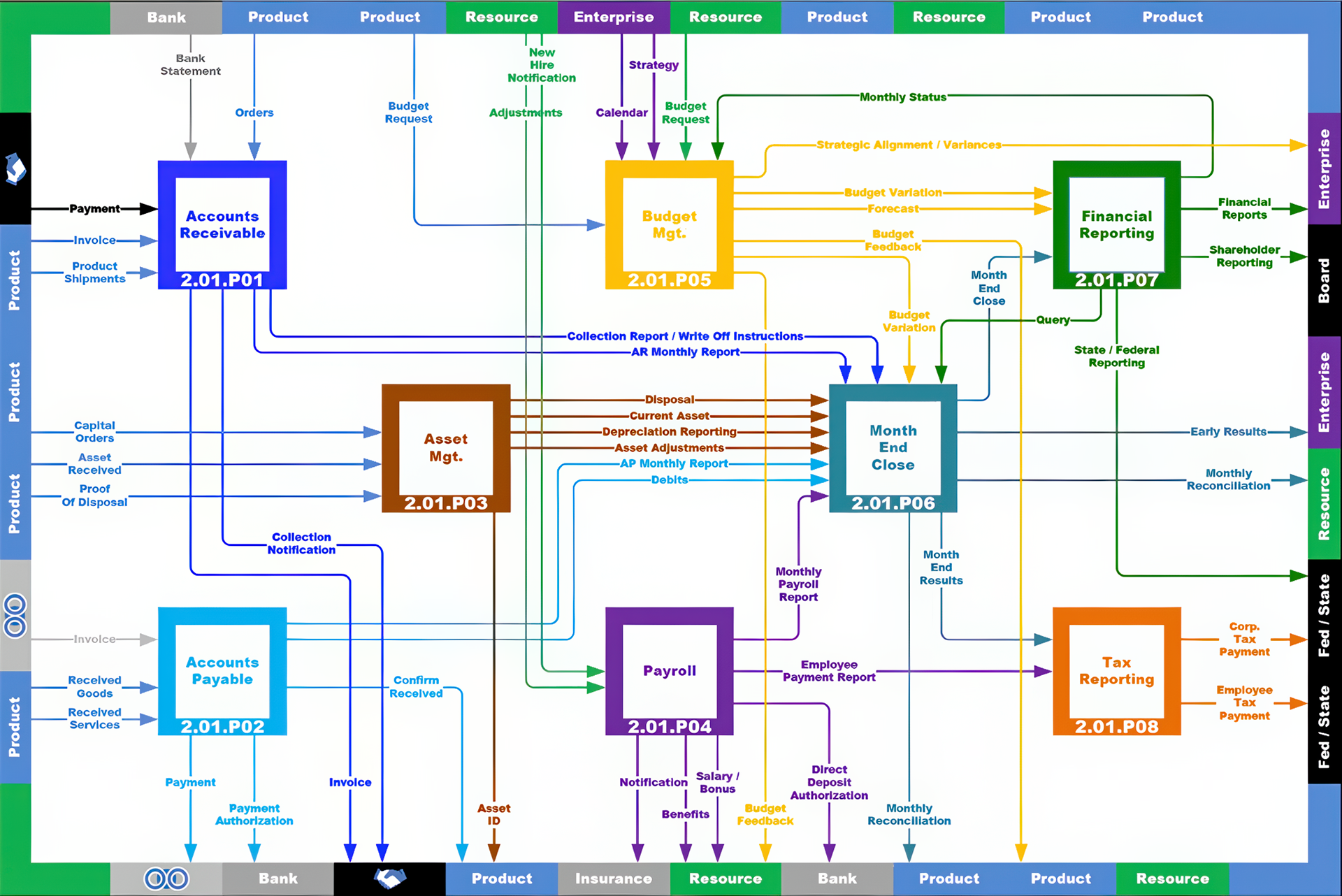In most organizations, structure follows a traditional model: a top-down hierarchy in which the CEO and C-suite define strategy, then push plans and resources downward for implementation. While this model gives a clear chain of command and decision-making authority, it often fails to connect the dots between the strategy created at the top and the execution that must happen at the front lines.
What gets lost in this cascade is how work actually gets done. Functional silos, departmental handoffs, and disconnected systems can fragment even the best-laid strategies. What’s needed to bridge these gaps isn’t more management layers or more meetings—it’s a stronger focus on business processes.
The Missing Link: Business Processes
Behind every product delivered, every service performed, and every customer interaction lies a business process. These processes represent the way work flows through an organization—from one task to the next, from one department to another. Processes connect functions. They create the path by which strategy turns into action.
When an organization operates without clearly defined, well-managed processes, its biggest problems often lie hidden—not within individual departments, but between them. These interdepartmental boundaries are where confusion and inefficiencies thrive: it becomes unclear what the problem is, where it originates, who owns it, and who has the authority to fix it.
Tasks, when strung together in the right way, form processes. Processes, in turn, link into systems. Systems come together to define the enterprise. Without attention to this structure, organizations become disconnected and inefficient—regardless of how strong their strategic vision may be.
Leadership’s Frustration: Strategy Without Execution
At Business Enterprise Mapping (BEM), we’ve spent over two decades working with leadership teams across a diverse spectrum of industries. One of the most consistent patterns we observe is a disconnect between strategic intention and operational reality.
Executives often feel confident in their organization’s vision and direction. Yet, many express deep frustration with the company’s ability to consistently execute. They describe a pattern where high-level plans stall or underperform once they reach the operational level.
The issue is not the people. Nor is it typically the equipment, the technology, or the facilities. The root cause is that the work is not structured or managed in a way that reliably supports execution. And that structure—the invisible thread that weaves strategy into everyday activity—is the organization’s business processes.
What the Data Tells Us: Processes Are the Problem—and the Opportunity
In analyzing over 10,000 documented organizational improvement opportunities across more than 150 client organizations, BEM has compiled the following data by category:

The results are clear: 72% of organizational challenges stem from ineffective business processes and their boundaries.
A deeper examination of these findings reveals the nature of process-related failures:
- Processes are often undefined or poorly documented
- They are inconsistently followed or overly complex
- Non-value-added steps consume time and resources
- Clear customer and supplier connections are lacking
- Accountability for performance is missing
- Processes are rarely measured or continuously improved
In short, most organizations lack the operational scaffolding required to support consistent, scalable, and value-driven execution.
Why Does This Happen?
The answer lies in investment priorities. Organizations readily invest in physical infrastructure—technology, equipment, facilities—and in human capital—recruiting talent, training, and development. These are necessary and important. However, few organizations make an equivalent investment in the development and management of business processes.
This oversight is costly.
Processes are the engine through which all other assets are leveraged. If processes are weak, even the most advanced systems and skilled people will underperform. Without well-defined workflows, work becomes reactive rather than proactive, and operational problems become chronic rather than resolved.
Leaders may believe that their organization is doing everything right—strategizing effectively, hiring the best people, deploying advanced tools—yet they’re still not seeing results. The missing link is almost always process.
The Solution: Building Reliable, Capable Processes
The good news is that process weaknesses are not insurmountable. They can be addressed systematically, with the right approach.
The path to stronger execution begins with defining, improving, and aligning business processes and systems. This discipline is known as Business Process Management (BPM)—a structured methodology for mapping, analyzing, measuring, and continuously improving the way work is done.
When an organization builds reliable, high-performing processes, the benefits are significant:
- Execution becomes repeatable and consistent. Employees know what to do, when, and how.
- Customer value increases. Processes are designed around customer needs, not internal convenience.
- Risk is mitigated. Well-defined responsibilities reduce ambiguity and enhance compliance.
- Profitability improves. Waste is reduced, productivity increases, and work flows more efficiently.
- Strategy is activated. Leaders gain a direct line of sight from vision to execution.
From Siloed Structure to System Thinking
To unlock these benefits, organizations must shift their thinking. Rather than viewing departments as the primary building blocks of the enterprise, they must begin to see the organization as a network of interconnected systems and processes.
This doesn’t mean eliminating the org chart. Rather, it means complementing the traditional hierarchy with a process view that overlays how work truly flows. It means empowering process owners—those closest to the work—to identify issues, propose improvements, and be accountable for performance.
It also means measuring what matters. Key performance indicators (KPIs) should be tied to processes, not just outcomes. By tracking how processes perform—cycle time, error rate, customer satisfaction—organizations can diagnose problems early and respond swiftly.

Conclusion: Process is the Path to Performance
Leadership sets the vision, but processes drive the results. An organization can have the most compelling strategy in the world, but without the operational capability to deliver on it, the vision remains out of reach.
Business processes are not just a tactical concern for middle management. They are a strategic asset. When effectively defined and managed, they form the foundation of enterprise performance, innovation, and long-term success.
Organizations that embrace business process management not only close the gap between strategy and execution—they also unlock their full potential to create value for customers, shareholders, and employees alike.

